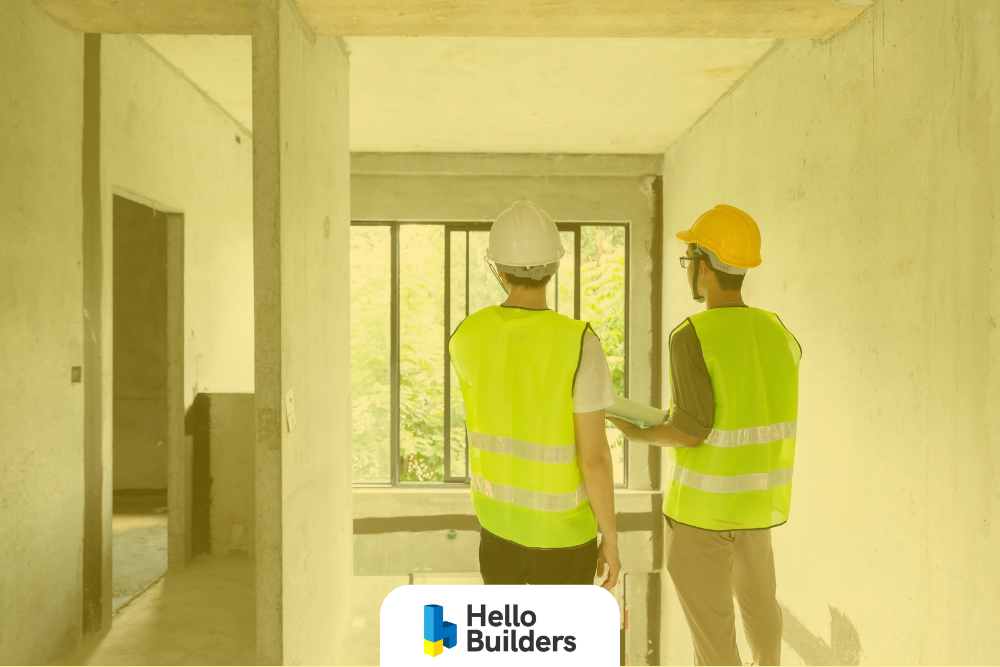
Building a house is a major investment, and many homeowners focus only on the visible expenses like materials and labor. However, there are several hidden costs that can quickly increase your budget if not planned for. From land preparation to ongoing maintenance, these overlooked expenses can create financial surprises.
In this article, we highlight the top 7 hidden costs of house construction in Sri Lanka and provide practical tips to help you plan effectively. So, we invite you to read our article and learn ways to avoid unexpected construction costs.
Without further ado, let’s get started…
1. Land Preparation and Site Work Costs
Before starting construction, preparing the land properly is crucial. Land preparation includes clearing the site, leveling uneven areas, and treating the soil to ensure it can support the foundation. These steps help prevent structural issues in the future and make construction safer and more efficient.
Key Costs in Land Preparation
- Clearing and leveling: Removing trees, rocks, and debris from the land. Leveling uneven terrain to create a stable foundation.
- Soil treatment: Strengthening the soil where necessary, especially for plots with weak or clay-rich soil.
Additional Expenses
- Drainage systems: Installing proper drainage to prevent water accumulation around the foundation. Poor drainage can lead to structural damage over time.
- Retaining walls: Required for sloped plots to prevent soil erosion and provide extra stability.
Proper planning for land preparation can reduce unexpected problems and save money during the construction process.
2. Legal and Regulatory Fees
When building a house in Sri Lanka, legal and regulatory costs are often overlooked but can be significant. These fees ensure that your property is properly registered and that your construction complies with local laws.
Key Legal Costs
- Stamp duty and registration fees: Required for officially registering the property under your name. These government charges vary based on property value and location.
- Lawyer fees: Hiring a lawyer helps with property registration, title verification, and transfer processes. Legal guidance reduces the risk of disputes later.
Construction Permits and Approvals
- Building permits: Obtaining official permission before starting construction is mandatory.
- Zoning approvals: Ensure your construction complies with land-use regulations.
- Safety inspections: Required to confirm that your construction meets building standards and safety requirements.
Accounting for these fees early in your budget prevents delays and legal complications during construction.
3. Utility Connections
Connecting utilities is an essential part of house construction, and the costs involved can sometimes be higher than expected. These connections are necessary for making the house livable and fully functional.
Main Utility Costs
- Electricity connection: Includes the cost of installing meters, wiring from the main line to the property, and sometimes transformer charges for larger plots. Delays or remote locations can increase these expenses.
- Water supply: Costs involve connecting to the municipal water system or installing a private water source, such as a borewell. Pipe installation, pumps, and storage tanks may also add to the budget.
- Sewage and drainage: Proper waste disposal is critical. Connecting to a municipal sewage system or installing septic tanks requires careful planning and can be expensive depending on soil type and plot location.
- Internet and communication lines: Laying cables and setting up connections can be overlooked, especially in remote areas, but they are necessary for modern living.
Additional Costs for Remote or Undeveloped Areas
- Infrastructure upgrades: Some plots may require additional electrical lines, water pipelines, or road access before utilities can be connected.
- Temporary setups: During construction, temporary electricity or water arrangements may be needed, which adds extra costs but ensures that construction work proceeds without interruption.
Planning utility connections in advance helps avoid delays and unexpected expenses. Factoring these costs into your initial budget ensures smoother construction and prevents last-minute financial surprises.
4. Material and Transportation Costs
Materials form the backbone of any construction project, but the costs can often exceed initial estimates due to several hidden factors. Planning carefully for these expenses is crucial to avoid budget overruns.
Material-Related Costs
- Wastage: Some materials may get damaged or wasted during handling, cutting, or storage. It is common to account for an extra 5–10% of materials for wastage.
- Subpar materials: Using lower-quality materials may seem cheaper at first, but they can lead to repairs and replacements, increasing costs in the long run.
- Material shortages: Unavailability of specific materials can delay construction and force you to buy alternatives at higher prices.
Transportation Costs
- Site accessibility: If the plot is in a remote or hard-to-reach area, transporting heavy materials like cement, sand, or bricks can cost more.
- Delivery charges: Frequent deliveries or special transport arrangements for large items can add to the overall expense.
Price Fluctuations
- Market changes: Material prices, especially cement, steel, and timber, can fluctuate due to supply and demand, inflation, or import costs.
- Impact on budget: Even small price increases can significantly affect the total construction cost, so it’s important to monitor prices regularly and adjust the budget accordingly.
By considering wastage, quality, transportation, and price fluctuations, homeowners can prepare a more realistic budget and reduce unexpected financial pressure during construction.
5. Labor and Contractor Charges
Labor is one of the major components of house construction, and costs can vary widely depending on location, skill level, and the complexity of the work. Careful planning of labor expenses is essential to stay within budget.
Factors Affecting Labor Costs
- Regional differences: Labor charges differ between urban and rural areas. In cities, skilled labor is usually more expensive, while rural areas may have lower rates but limited availability of specialized workers.
- Skill level: Hiring experienced and skilled workers may cost more initially, but they can complete work efficiently and maintain high-quality standards. Unskilled labor may reduce costs upfront but can lead to mistakes and additional expenses later.
Importance of Skilled Labor
- Reducing repair costs: Properly executed work minimizes the need for future repairs or rework, saving time and money.
- Efficiency and quality: Skilled contractors can handle complex tasks, ensure safety standards, and maintain the project schedule, avoiding costly delays.
- Supervision needs: Experienced labor requires less supervision, allowing the project manager or homeowner to focus on other aspects of construction.
Allocating a fair budget for labor and hiring the right contractors ensures that the construction process is smooth, timely, and of high quality, ultimately preventing hidden costs that arise from poor workmanship.
6. Design and Customization
Design and customization play an important role in creating a home that meets your needs and preferences. However, these elements can add hidden costs to the overall construction budget if not planned carefully.
Architectural and Design Costs
- Complex designs: Intricate layouts, unique shapes, or multi-level structures often require additional materials and labor, which increases the cost.
- Custom features: Special elements such as large windows, decorative facades, or built-in furniture can add to both material and labor expenses.
Professional Fees
- Architects: Hiring an architect ensures your home is functional, safe, and visually appealing. Their fees depend on the complexity of the design and the size of the project.
- Engineers: Structural, electrical, and plumbing engineers may be required to review plans and provide guidance. Their input helps prevent future problems and ensures compliance with building standards.
Proper planning for design and customization costs helps maintain a balance between creating a unique home and staying within budget. Discussing requirements with professionals early can prevent unexpected expenses during construction.
7. Maintenance, Repairs, and Insurance
The cost of building a house does not end once construction is complete. Ongoing maintenance, unexpected repairs, and insurance are important factors that homeowners often overlook.
Maintenance and Repair Costs
- Routine maintenance: Regular tasks such as painting, plumbing checks, and roof inspections help keep the house in good condition and prevent larger problems.
- Unexpected repairs: Issues like leaks, electrical faults, or structural damage can occur unexpectedly. Budgeting for these repairs ensures that you can handle them without financial strain.
Insurance
- Home insurance: While optional, having insurance protects your investment against fire, natural disasters, or theft. Premiums vary depending on the property size, location, and coverage type.
Accounting for maintenance, repairs, and insurance from the start helps homeowners plan a realistic long-term budget and ensures the house remains safe and functional over time.
Additional Costs Associated with House Construction in Sri Lanka Worth Mentioning
Even after accounting for the main construction expenses, there are several other costs that can affect your budget. These are often overlooked but can add up quickly.
To plan effectively, here are some additional costs worth considering:
1. Unexpected Site Conditions
- Groundwater issues: High water tables or unexpected underground water can require drainage solutions or soil treatment.
- Soil problems: Weak or unstable soil may need reinforcement or special foundation work, increasing costs.
2. Worker and Supervision Costs
- Temporary accommodations: If the construction site is in a remote area, providing housing or facilities for workers adds extra expense.
- Project management fees: Hiring supervisors or additional managers beyond standard labor helps keep the project organized but increases overall costs.
3. Exterior and Interior Costs
- Landscaping and fencing: Creating gardens, lawns, or installing boundary fences may not be included in the main construction budget.
- Minor interior furnishings: Items like built-in cabinets, shelves, or basic decor are often separate from the main construction plan.
By accounting for these additional costs, homeowners can better anticipate financial needs and avoid surprises during and after construction.
Need Help on Building Your Dream Home?
At Hello Builders, we specialize in turning your vision into reality with high-quality construction, modern designs, and expert project management. From luxury villas to contemporary homes, we handle every step of the process with professionalism and attention to detail.
Here’s why Hello Builders is the trusted choice for homeowners in Sri Lanka:
- Expertise & Quality: We use certified materials and follow best practices to ensure your home is safe, durable, and stylish.
- Comprehensive Services: Architectural design, structural engineering, interior solutions, council approvals, and full project management(all under one roof).
- Customer-Focused Approach: We work closely with you to bring your dream home to life while respecting your budget and timeline.
Take the first step toward your perfect home today. Click below to get in touch with our team!
| Contact Us |
Final Thoughts
Building a house in Sri Lanka costs more than just materials and labor. Hidden expenses like land preparation, legal fees, utility connections, material delivery, labor, design changes, and maintenance can add up quickly if not planned.
Knowing these costs early and including them in your budget helps avoid surprises. Working with skilled professionals and preparing for extra expenses like insurance and unexpected site issues will make the construction process easier and help you build a safe and comfortable home.
Key Takeaways
- Land Preparation is Crucial – Clearing, leveling, and treating the soil before construction ensures a strong foundation and prevents future structural issues. Retaining walls and proper drainage for sloped plots are essential for long-term stability.
- Legal and Regulatory Costs Can Be Overlooked – Stamp duty, registration fees, and lawyer charges are necessary to secure property ownership and avoid legal disputes. Building permits, zoning approvals, and safety inspections must be planned in advance to prevent delays.
- Utility Connections Add Significant Costs – Electricity, water, sewage, and internet connections often involve hidden expenses, especially for remote plots. Temporary setups during construction and infrastructure upgrades may be required to maintain workflow.
- Material Costs Can Fluctuate – Wastage, low-quality materials, shortages, and transportation challenges can quickly increase expenses. Monitoring market prices and planning for material contingencies helps maintain the budget.
- Labor and Contractor Charges Vary – Skilled labor is essential for quality construction, though it may cost more upfront. Hiring experienced contractors reduces the risk of mistakes, delays, and additional repair costs.
- Design and Customization Can Increase Expenses – Complex architectural designs, unique features, and custom elements require extra materials, labor, and professional fees. Early planning with architects and engineers ensures functionality and budget control.
- Maintenance and Repairs Are Long-Term Costs – Routine upkeep, unexpected repairs, and home insurance are often underestimated. Budgeting for these expenses ensures the house remains safe, functional, and durable over time.
- Unexpected Site Conditions Affect Budgets – Groundwater issues, unstable soil, or other hidden land problems may require additional foundation work or drainage solutions, increasing overall costs.
- Additional Site and Worker Costs – Temporary accommodations for workers, project management fees, and supervision costs can add up, especially in remote or difficult-to-access locations.
- Exterior and Interior Expenses Should Be Considered – Landscaping, fencing, minor furnishings, and other finishing touches are frequently left out of initial budgets but are necessary for completing a functional and aesthetically pleasing home.
FAQs
How much can land preparation cost add to the house construction budget?
Land preparation costs vary depending on soil quality and terrain. Uneven or poor soil may require extra work such as leveling, soil stabilization, or foundation reinforcement, which can increase the budget significantly. Exact amounts vary, but this can easily add several hundred thousand to millions of Sri Lankan rupees depending on the site condition and size.
Why do soil quality and uneven terrain increase construction expenses?
Poor soil quality or uneven terrain can pose structural risks, requiring additional foundation work, soil treatment, or retaining walls to ensure stability and safety. These extra construction steps lead to higher material and labor costs.
What roles do architect and engineer fees play in the total cost of building a house?
Architect and engineer fees in Sri Lanka usually range from 1% to 8% of the overall construction cost. Some professionals may charge per square foot or per consultation visit. These fees cover design, planning, approvals, and supervision, essential for quality and compliance but adding a considerable amount to the total budget.
How do material choices impact the hidden costs of construction?
Material quality dramatically influences cost. Standard locally sourced materials are affordable and durable, whereas premium or imported materials like marble, granite, or hardwood significantly increase expenses. Fluctuations in material prices during construction also contribute to unexpected budget increases.
What unexpected expenses can arise during the house construction process?
Unexpected expenses include price hikes in materials, labor shortages, site-related issues like hidden rocks or poor soil, and design changes requested mid-construction. Weather or supply chain disruptions can also delay work and increase costs.






